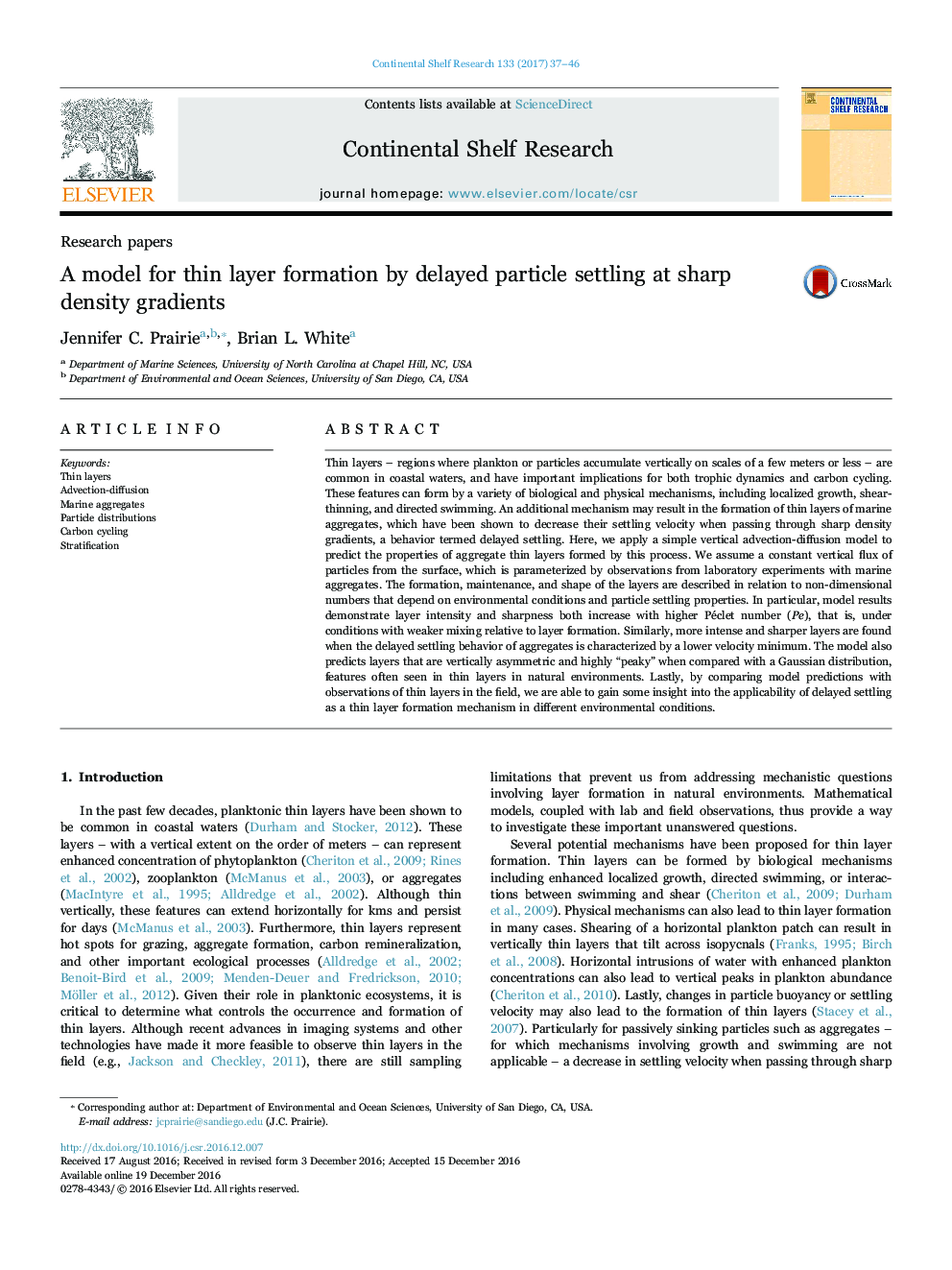| Article ID | Journal | Published Year | Pages | File Type |
|---|---|---|---|---|
| 5764518 | Continental Shelf Research | 2017 | 10 Pages |
Abstract
Thin layers - regions where plankton or particles accumulate vertically on scales of a few meters or less - are common in coastal waters, and have important implications for both trophic dynamics and carbon cycling. These features can form by a variety of biological and physical mechanisms, including localized growth, shear-thinning, and directed swimming. An additional mechanism may result in the formation of thin layers of marine aggregates, which have been shown to decrease their settling velocity when passing through sharp density gradients, a behavior termed delayed settling. Here, we apply a simple vertical advection-diffusion model to predict the properties of aggregate thin layers formed by this process. We assume a constant vertical flux of particles from the surface, which is parameterized by observations from laboratory experiments with marine aggregates. The formation, maintenance, and shape of the layers are described in relation to non-dimensional numbers that depend on environmental conditions and particle settling properties. In particular, model results demonstrate layer intensity and sharpness both increase with higher Péclet number (Pe), that is, under conditions with weaker mixing relative to layer formation. Similarly, more intense and sharper layers are found when the delayed settling behavior of aggregates is characterized by a lower velocity minimum. The model also predicts layers that are vertically asymmetric and highly “peaky” when compared with a Gaussian distribution, features often seen in thin layers in natural environments. Lastly, by comparing model predictions with observations of thin layers in the field, we are able to gain some insight into the applicability of delayed settling as a thin layer formation mechanism in different environmental conditions.
Keywords
Related Topics
Physical Sciences and Engineering
Earth and Planetary Sciences
Geology
Authors
Jennifer C. Prairie, Brian L. White,
